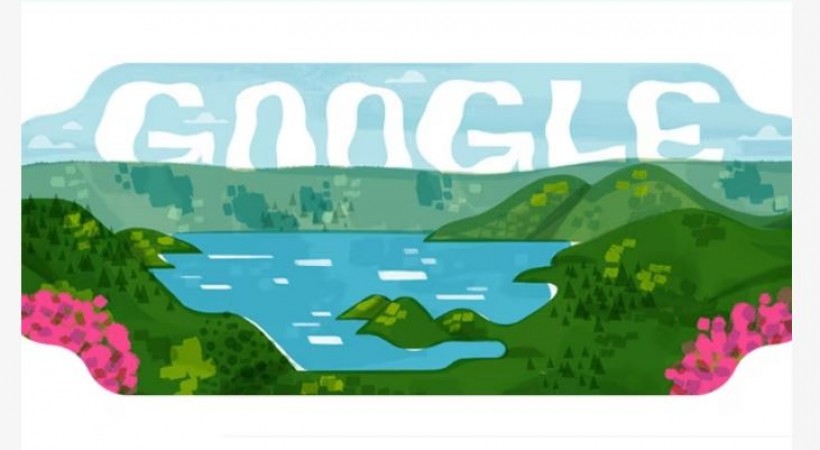
Today's Google Doodle commemorates Indonesia's Lake Toba, the largest crater lake and UNESCO Global Geopark.
The Google picture today is all about cheering for Indonesia's Lake Toba. It's the biggest lake that sits in a volcano's hole and is super special because the whole world thinks it's really cool.
Indonesia's Lake Toba, renowned as the largest crater lake and a distinguished UNESCO Global Geopark. The artistic rendition pays homage to the volcanic eruption of Toba Caldera over 74,000 years in the past, a cataclysmic event that gave birth to the majestic Lake Toba. This monumental eruption caused the magma chamber of the volcano to cave in, resulting in the emergence of Samosir Island. This island, now a captivating tourist hotspot, hosts a medley of Indigenous ethnic tribes, adding to its cultural significance.
The eruption of the Toba Caldera over 74,000 years ago stands as one of the most cataclysmic events in Earth's history. This massive volcanic eruption played a pivotal role in shaping the landscape of what is now Indonesia and led to the formation of Lake Toba.
The Toba Caldera is the remnants of a super volcano situated in Sumatra, Indonesia. Around 74,000 years ago, this colossal volcano erupted in a supervolcanic event that had far-reaching consequences. The eruption was so immense that it is believed to be one of the most powerful volcanic eruptions in the last 25 million years. The eruption released an enormous amount of volcanic ash, gases, and lava into the atmosphere, creating a volcanic winter and drastically altering the global climate.
The aftermath of the eruption had significant implications for the environment and human populations. The volcanic ash and gases spewed into the atmosphere led to a "volcanic winter," causing a drop in global temperatures and reduced sunlight. This climatic shift had adverse effects on ecosystems and may have resulted in widespread ecological disruptions, including the extinction of several species. The volcanic winter likely had impacts on human populations as well, potentially leading to population declines and shifts.
The eruption of the Toba supervolcano also played a crucial role in the geological formation of the area. The intense eruption caused the collapse of the volcano's magma chamber, forming a massive caldera. Over time, this caldera became what we now know as Lake Toba. The lake is not only the largest crater lake on Earth but also one of the deepest. It covers a substantial area and holds immense geological and ecological significance.
One of the striking features resulting from the volcanic activity is the island of Samosir, located within Lake Toba. The collapse of the magma chamber created a void that was eventually filled with water, forming Lake Toba. Within this lake, the island of Samosir emerged, adding to the dramatic scenery of the area. Samosir has since become a popular tourist destination, known for its natural beauty, cultural significance, and the presence of various Indigenous ethnic tribes.
Recognizing the geological and ecological importance of Lake Toba and its surroundings, UNESCO designated Lake Toba as a Global Geopark on August 31, 2020. This designation highlights the area's unique geological heritage and promotes sustainable tourism and conservation efforts. The Google Doodle celebrating Lake Toba's UNESCO Global Geopark status acknowledges the significance of this ancient supervolcanic eruption and its enduring impact on the world today.